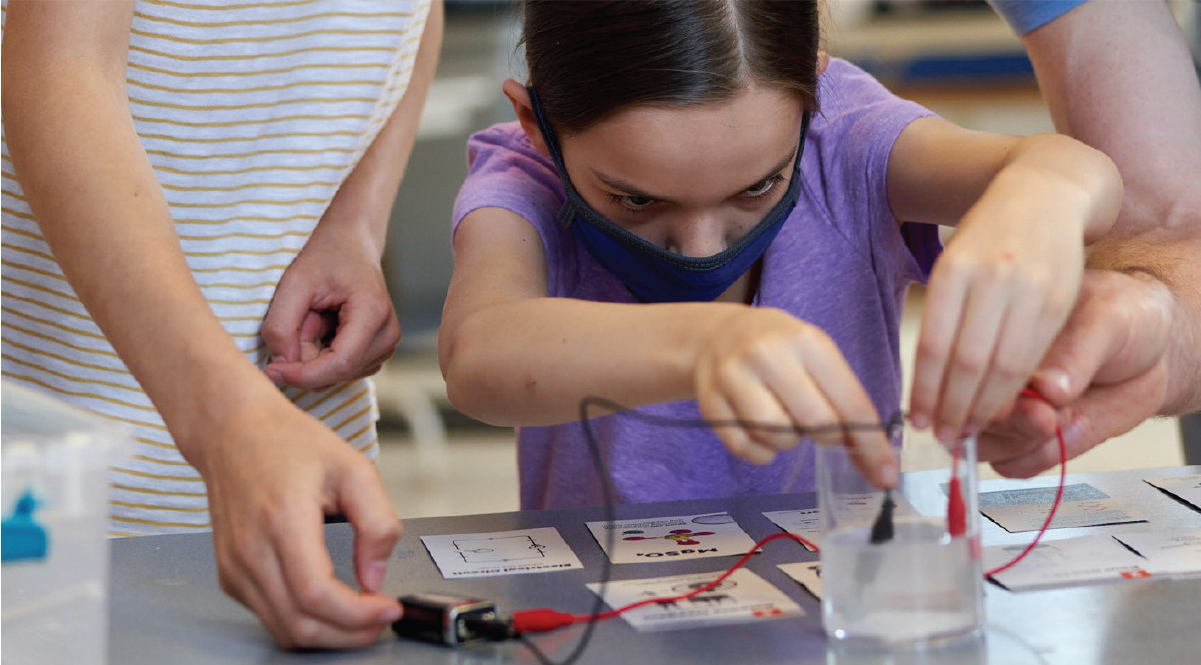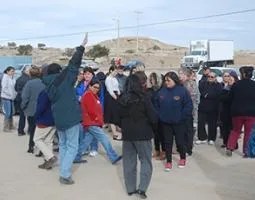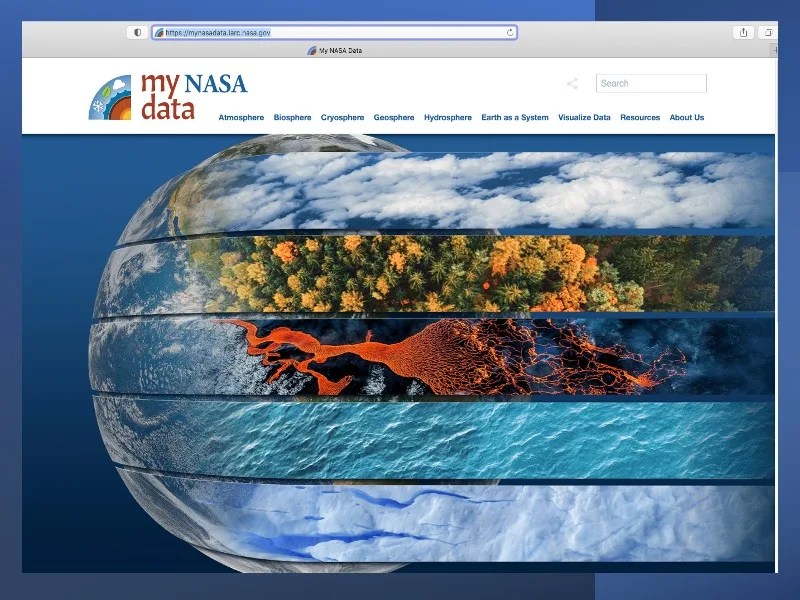Learning Resources
- Mini Data Stories: Online experiences for exploring NASA imagery in an interactive virtual sky, with written guides and videos from scientists sharing why they study these objects.
- NASA eClips™ Videos: NASA eClips™ videos are tailored to meet the needs of students in grades 3-12 to increase STEM literacy through the lens of NASA.
- Sonification of Webb's Transmission Spectrum of Exoplanet WASP-96 b: NASA’s James Webb Space Telescope observed the atmospheric characteristics of the hot gas giant exoplanet WASP-96 b – which contains clear signatures of water – and the resulting transmission spectrum’s individual data points were translated into sound.
- Sonifications of Webb's Image of the Cosmic Cliffs in the Carina Nebula: There’s an immersive way to explore some of the first full-color infrared images and data from NASA’s James Webb Space Telescope – through sound. Listeners can enter the complex soundscape of a near-infrared image of the Cosmic Cliffs in the Carina Nebula, a large cloud of gas and dust where stars are forming or have already formed.
- Sonifications of Webb's Images of the Southern Ring Nebula: These sonifications scan the images from left to right. The new sounds were also adapted to a video, allowing sighted viewers to watch as a vertical line moves across the frame.
- ViewSpace Interactives Library: ViewSpace Interactives allow you to explore objects and materials from different perspectives, and discover how we can combine information to better understand the universe.
- ViewSpace Video Library: Developed by a team of scientists, educators, writers, and designers working closely with NASA missions, ViewSpace videos feature the latest imagery from satellites and space telescopes, and provide unique insight into our understanding of the universe.
- SciGirls Get Tech Activity Guide: The activities in this book are gender-equitable, hands-on projects that serve as entrees to tech.
- Solar System Explorer: Explore an accurate online model of our solar system that is based on NASA imagery and other real data. Navigate through space, control time, and explore the Sun, planets, and moons from up close and far away.
- Life Cycle of Stars: Explore objects representing various stages of the stellar life cycle and uncover how these stages fit together into two related sequences: one for Sun-like stars (similar in mass to our Sun) and one for massive stars (more than 8–10 times the mass of our Sun)
- GLOBE Observer Toolkit for Informal Educators: Watch this short video for a quick overview of GLOBE Observer citizen science, ideas for integrating into programs, and browse the Toolkit for Informal Educators.
- NASA eClips™: NASA eClips™ videos, activities, and lessons are tailored to meet the needs of students in grades 3-12 to increase STEM literacy through the lens of NASA.
- How to Talk to a Spacecraft: Binary coding activities can be a fun activity to do at home as well.
- Light & Color: Exploring Visible Light Activity Guide: This activity introduces learners to the visible-light spectrum and color mixing. Your event’s attendees may explore visible light by observing it with diffraction grating glasses to see how it can be broken up into its component colors (red, orange, yellow, green, blue, and violet).
- The Expanded Universe: Playing with Time Activity Guide: In this activity, participants use balloons to model the expansion of the universe and observe how expansion affects wavelengths of light and distance between galaxies.
- Exoplanet Trading Cards and Activity Guide: The exoplanet card game is a round-robin game that uses the 14 exoplanet game cards.
- Paper Circuits: Light Up Exploded Stars: Paper circuits help learners of all ages explore the basics of electricity (energy that results from the existence of charged particles like electrons or protons) and conductivity (the degree to which a material can conduct electricity).
- STEM Activity Clearinghouse: High quality, vetted STEM activities that are appropriate for library use.
- GLOBE Observer Girl Scouts Guide: Girl Scouts can use the GLOBE Observer app to complete their Think Like a Citizen Scientist Journey.
- GLOBE Observer Toolkit for Informal Educators: Watch this short video for a quick overview of GLOBE Observer citizen science, ideas for integrating into programs, and browse the Toolkit for Informal Educators.
- Spotlite Design Challenge: Help learners research, write scripts and produce short videos to build their own understanding of science concepts through the Spotlite Design Challenge.
- Girls STEAM Ahead with NASA Cookbook: Create your own Girls STEAM Ahead with NASA event using NASA’s Universe of Learning resources. Like any typical cookbook, our Program Cookbook includes recipes for events that are ordered by topic.
- Recoloring the Universe: Color, Astronomy and Coding: Using data from NASA's Chandra X-ray Observatory and other satellites of exploded stars, star-forming regions, and black holes, you'll learn basic coding.
- Tinkercad: Universe in 3D: When scientists combine data from the Chandra X-ray Observatory with other telescopes, such as the Hubble or Spitzer space telescopes, or with scientific and mathematical models, we can create data-driven 3D maps of objects in our universe, such as stars that have exploded.
- MicroObservatory: NASA's space science researchers control some of the world's most sophisticated space probes and orbiting telescopes to get amazing images of objects in space. Now YOU can join them by operating your OWN ground-based MicroObservatories – real robotic telescopes that you command through this website!
- DIY Planet Search: Help scientists better understand the movements of these planets around other stars by taking your own measurements of known exoplanets and contributing them to the DIY Planet Search Community.
- See full list of upcoming OpenSpace events
- See full list of upcoming and past NASA’s Universe of Learning events
- See full list of upcoming webinars from NISENET
- See full list of upcoming events from Infiniscope
- Tour It in 5 Minutes: Learn the fundamentals of creating your own virtual field trips using Infiniscope’s free Tour It tool in a quick 5 minute tutorial video.
- Incorporating Maps: Learn innovative and creative ways to integrate maps into a virtual field trip using Infiniscope’s free Tour It tool.
- What Will the James Webb Space Telescope See Out There?; Join American Museum of Natural History astrophysicist Jackie Faherty and Director of Astrovisualization Carter Emmart for this special look at the most complex space telescope ever built, the James Webb Space Telescope (JWST).
- Science Briefings: The NASA’s Universe of Learning Science Briefings are professional learning telecons that highlight current NASA astrophysics explorations and discoveries for the informal science education community, done in partnership with the NASA’s Museum & Informal Education Alliance.
Find Educational Activities and Resources

Digital Resources
Browse awesome, ready-to-use activities and resources to launch your NASA Science investigations

Lessons and Activities
Explore NASA Science lessons and activities to help make your curriculum out-of-this-world!

Professional Learning
Refuel with these educator-focused resources that will blast your classroom or program to infinity and beyond.

Learn NASA Science
Launch these activities and projects for learners ages 8 and up to activate science learning, even on the go!
